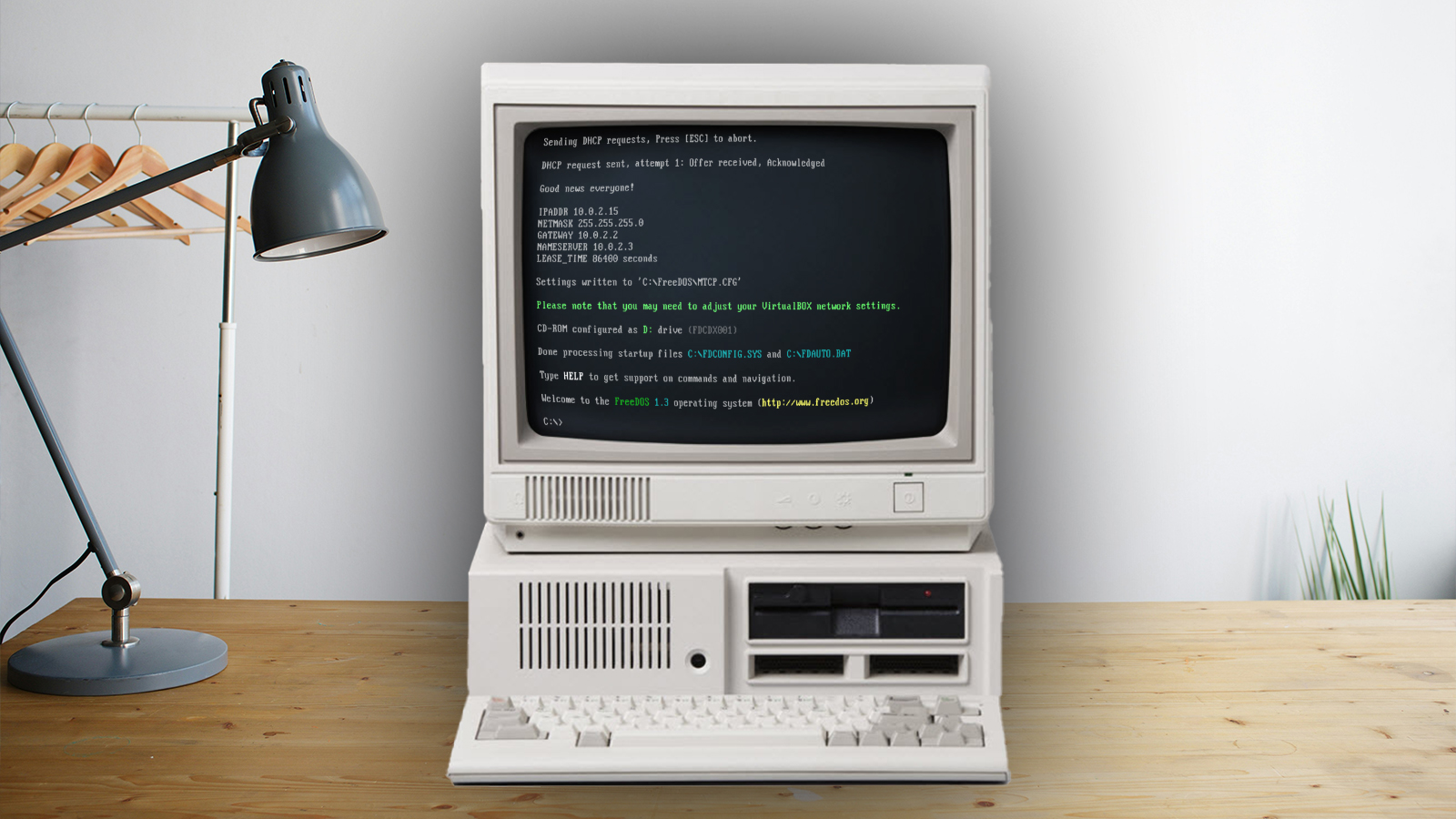
Younger PC users may have never encountered DOS. Even those of us who had a taste of it may only have used it as the Command Prompt or PowerShell 'app' in Windows. But even though Microsoft stopped updating MS-DOS in the year 2000 (as part of Windows Me), there remains a small group of passionate developers building and maintaining an open-source version of this operating system, called FreeDOS.
FreeDOS dates back to 1994, when its developer, Jim Hall announced it as PD-DOS. With Microsoft switching to the Windows operating system that focused on a graphical user interface, Hall wanted to keep this seminal command-line interface-based OS alive, so he built a public domain version (PD) of the text-based operating system. He would rename PD-DOS to FreeDOS soon thereafter, and it still receives updates up until today.
The operating system’s latest version is version 1.3, with major updates released every four to six years. This development cycle might seem long, especially as it’s not as complicated as Microsoft’s latest operating system. However, there are still challenges to conquer for such an old piece of software.
The biggest one is the shift from the old BIOS to the new UEFI firmware on most modern motherboards. While most custom DIY PC builds still retain some form of BIOS compatibility, many new computers no longer retain this ability. Furthermore, the introduction of Arm-based processors, like the Snapdragon X-powered Copilot+ PCs, means that this hardware is no longer compatible with FreeDOS.
It’s for these reasons that Hall doesn’t recommend running FreeDOS on bare metal (or directly on the PC). “That’s one reason why we recommend using FreeDOS in a virtual machine,” said Hall, in a recent interview with Ars Technica. “The virtual machines provide the BIOS. Although, from a practical side, I think most people aren’t interested in trying to run FreeDOS on bare hardware on a new desktop or laptop, with a 16-core Intel Core Ultra CPU, 32GB memory, 512GB SSD, and Wi-Fi. If you’re going to run FreeDOS, you are probably looking for that ‘retro’ computing experience, so you’re more likely to install FreeDOS on an older PC anyway.”
Nowadays you would probably need to dig out your granddad’s old IBM PC or your father’s first computer to find hardware to run FreeDOS directly. However, the rise of retro gaming has seen the release of several ‘new’ retro PCs, including the Retro Pocket 386 and Hand 386, which are powered by 40 MHz Intel 386 processors, or the even older Book 8088, which uses an Intel 8088 CPU.
With the right hardware or a virtual machine setup with FreeDOS you can run iconic retro games, like Duke Nukem, Commander Keen, Biomenace, and Wolfenstein 3D the way they were meant to be played. However, while the current version FreeDOS will load most classic DOS apps, it has one major incompatibility: it cannot serve as a boot loader for early versions of Windows, like Windows 3.1. MS-DOS compatible. But with FreeDOS development still on-going, there’s still hope that we can get this, and more functionality, in a future release.







